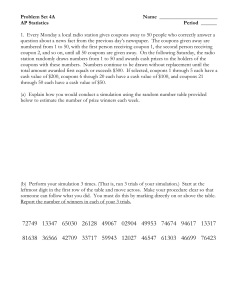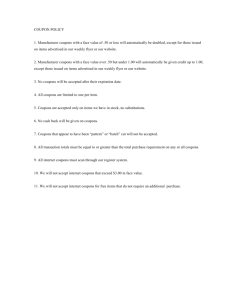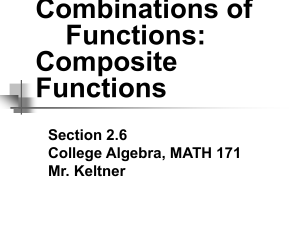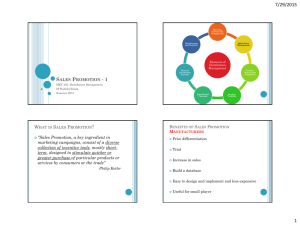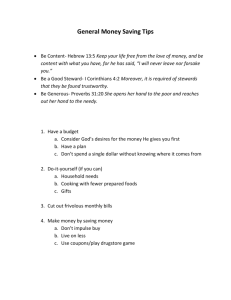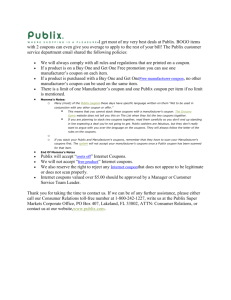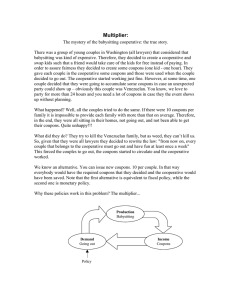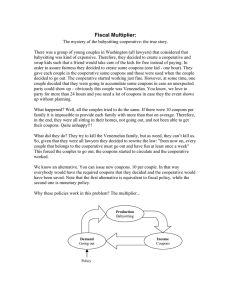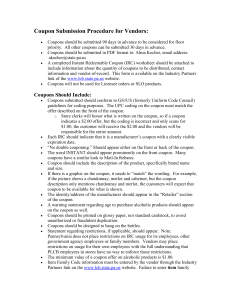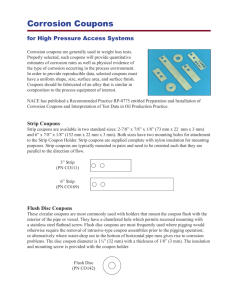AP Statistics Free-Response Question From 2001 3. Every Monday
advertisement
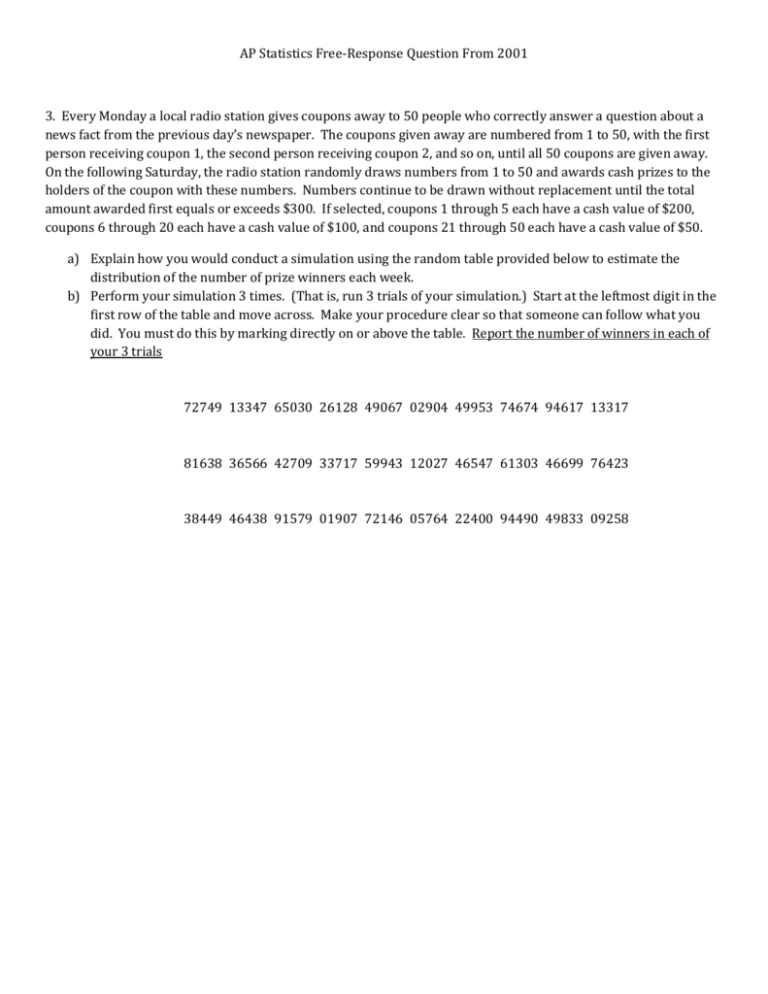
AP Statistics Free-Response Question From 2001 3. Every Monday a local radio station gives coupons away to 50 people who correctly answer a question about a news fact from the previous day’s newspaper. The coupons given away are numbered from 1 to 50, with the first person receiving coupon 1, the second person receiving coupon 2, and so on, until all 50 coupons are given away. On the following Saturday, the radio station randomly draws numbers from 1 to 50 and awards cash prizes to the holders of the coupon with these numbers. Numbers continue to be drawn without replacement until the total amount awarded first equals or exceeds $300. If selected, coupons 1 through 5 each have a cash value of $200, coupons 6 through 20 each have a cash value of $100, and coupons 21 through 50 each have a cash value of $50. a) Explain how you would conduct a simulation using the random table provided below to estimate the distribution of the number of prize winners each week. b) Perform your simulation 3 times. (That is, run 3 trials of your simulation.) Start at the leftmost digit in the first row of the table and move across. Make your procedure clear so that someone can follow what you did. You must do this by marking directly on or above the table. Report the number of winners in each of your 3 trials 72749 13347 65030 26128 49067 02904 49953 74674 94617 13317 81638 36566 42709 33717 59943 12027 46547 61303 46699 76423 38449 46438 91579 01907 72146 05764 22400 94490 49833 09258 Question 3 The purpose of question 3 was to evaluate the student’s ability to design and carry out a simulation to estimate the distribution of the number of prize winners in a weekly radio contest. To receive full credit on this question, students needed to describe how they would carry out the simulation and then conduct three trials using the given table of random numbers. Many students had difficulty describing the simulation process, and many responses received low scores because of poor communication. Common errors in answering question 3 were: Many students did not explain how random numbers would be used to represent the coupons in the drawing. Many students incorrectly used digits to represent the possible prize value amounts rather than the coupons in the drawing. Most students failed to adequately address the non-replacement requirement. Some students did not describe or implement a correct stopping rule (i.e., indicate when the simulation should be stopped). In part (b), some students failed to report the number of winners for each trial, even though this was underlined in the question 4 Some students seemed to be completely unfamiliar with the use of random number tables. Some even crossed out the random number table provided and replaced it with digits from the random number generator on their calculator. Response: 1 of 3 Score: 4 All five components of the solution in this response are clearly stated or demonstrated. This student used a different row of the random number table for each trial. Note that in part (b), the second "38" in row 3 of the table was disregarded, consistent with the non-repetition statement in part (a). Response: 2 of 3 Score: 4 In this response, the student assigned the random digits 00-99 to the 50 coupons and stated a correct rule to address the fact that two random digits were assigned to each coupon number. The student displayed the reduction of the double assignment to the numbers 01-50 in part (b). The separate issue of non-replacement was also addressed successfully. Response: 3 of 3 Score: 3 The student clearly discussed or demonstrated every component of the solution in the response except nonreplacement. Note that there is no mention of repeated values in part (a) and the second "38" in row 3 of the table is not disregarded in part (b).
